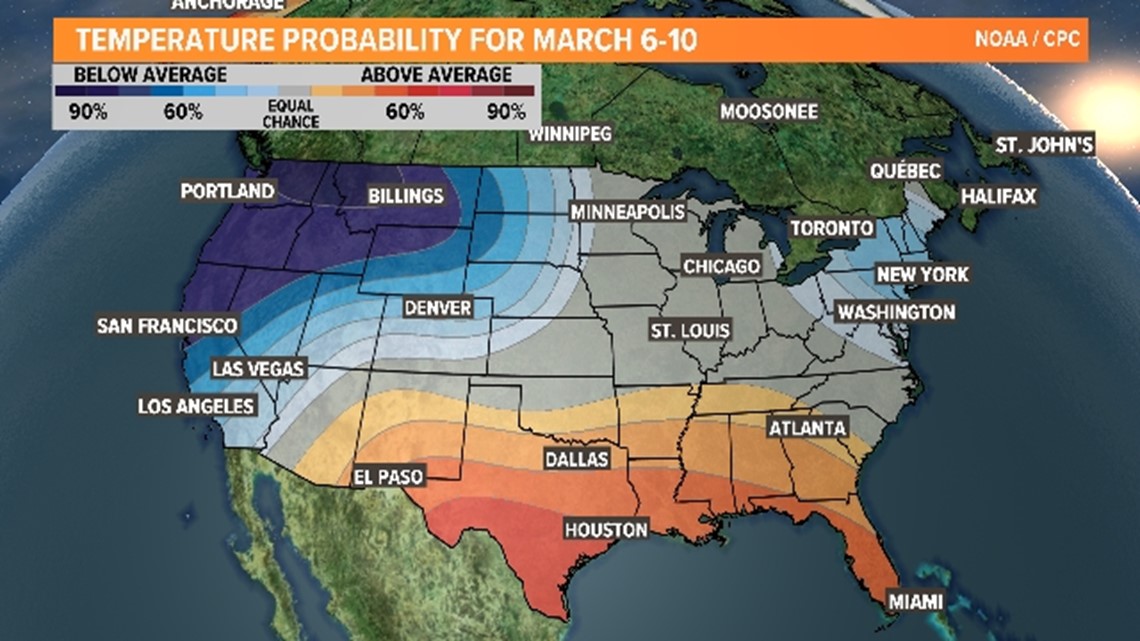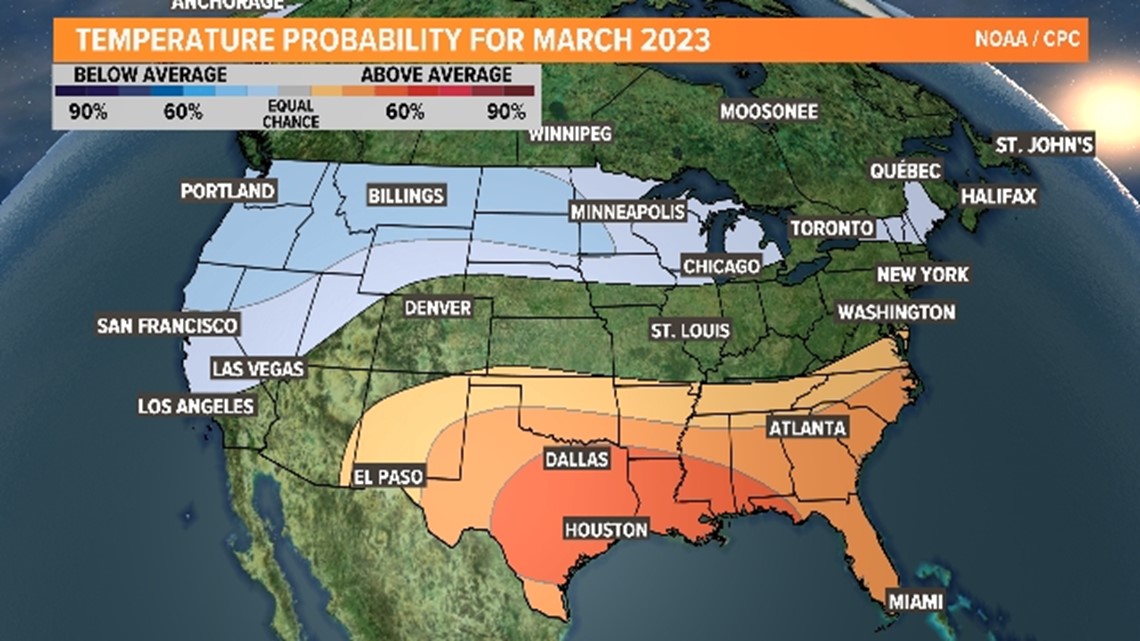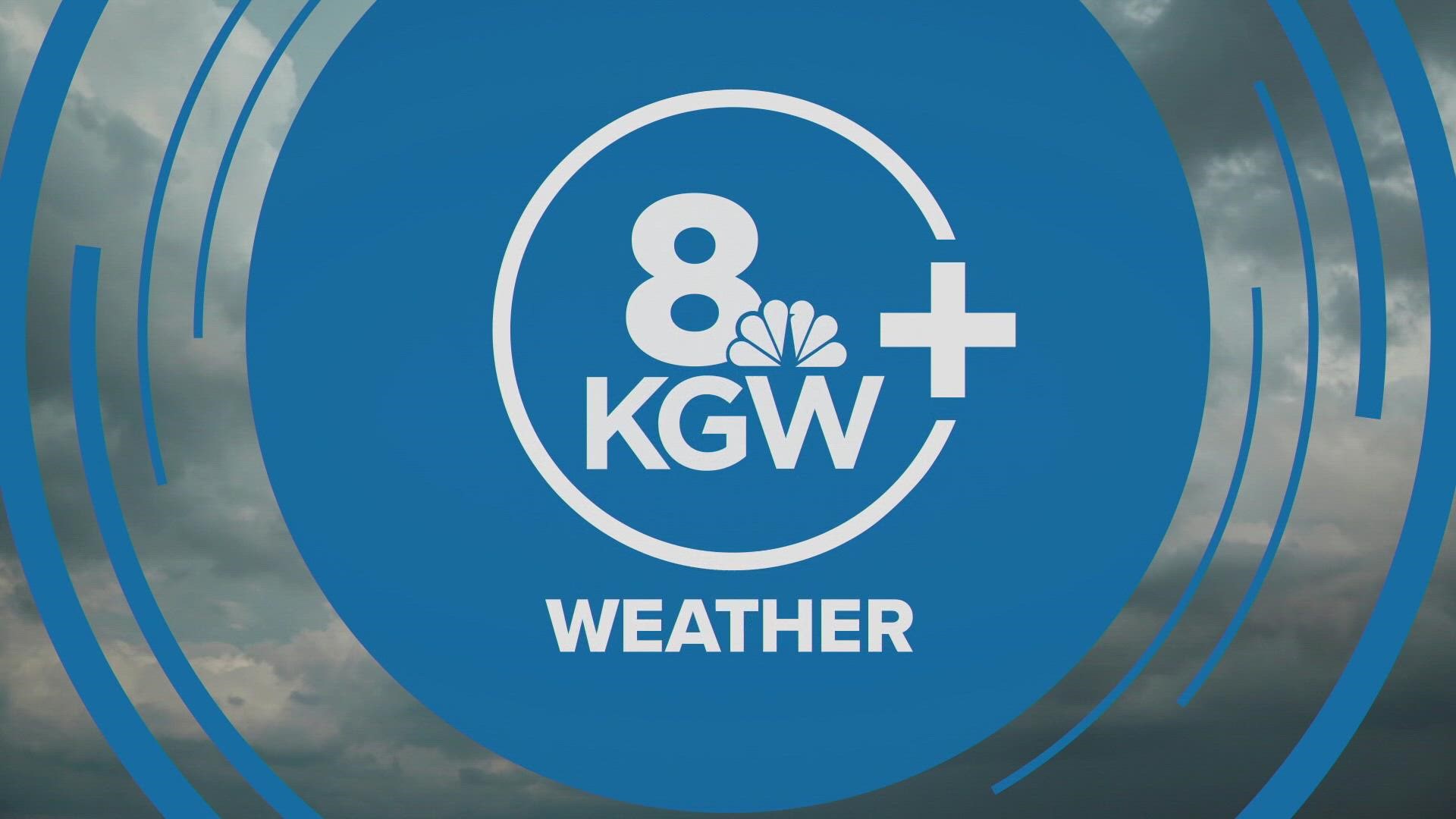PORTLAND, Ore. — March 1 marks the first day of meteorological spring, but that is hard to tell if you step outside.
You may not see any signs of a warm-up this month either, according to KGW meteorologist Chris McGinness.
March 1 is expected to bring a high of 42 degrees— that's well below 54 degrees, which is the average high temperature for March 1. By March 31, the average high rises to 59 and the low to 42 degrees, McGinness said.
The National Oceanic and Atmospheric Administration's Climate Prediction Center released its monthly outlook and it shows generally cooler than average temperatures.
"That does not immediately say 'more valley snow,' but it does suggest our current weather pattern is likely to continue for a while," McGinness said.
The Pacific Northwest is likely to see temperatures upwards of 90% below average between March 6-10, as illustrated in the graphic below.


"The storm track is generally allowing cold low pressure to form in the Gulf of Alaska and slide down the West Coast, rather than sweeping through the entire region, which would bring more of a westerly flow off the slightly milder east and central Pacific," McGinness said. "Temperatures within that airmass are running about 15 degrees below seasonal averages on the whole. The nuances on how low daily snow levels get will be a storm-by-storm basis, but the overall pattern looks to persist."


The last few weeks of February brought a historic snowstorm to Portland, along with sticking snow and freezing temperatures across much of the Willamette Valley and the Oregon Coast Range.
February finished 2.9 degrees below average for the month as a whole, McGinness reported.
What does 'meteorological spring' mean?
You may have heard meteorologists talk about meteorological spring. But what exactly does that mean?
Meteorological seasons are based on the calendar and the annual temperature cycle, whereas, astronomical seasons as based on rotation of the Earth around the sun, according to NOAA.
"We break the year down by seasons, and in weather terms, March, April, and May are referred to as meteorological spring," McGinness said.
The spring equinox arrives March 20, marking the first day of spring.
VIDEO PLAYLIST: KGW Weather

